Clovers and wood sorrels look alike. We may often confuse them due to their similarities. However, they are two distinct lawn weeds with their own set of similarities and differences. Identifying their differences will help you treat them more effectively. So, what grows in your lawn, clover or wood sorrel? How do you tell the difference between clover vs. wood sorrel? Let’s find out!
To clarify, clover and wood sorrel are two different species. Clover belongs to the genus Trifolium, while wood sorrel belongs to Oxalis. Clover has oval-shaped foliage with clusters of red or white flowers, while wood sorrel has heart-shaped leaves and bright yellow flowers.
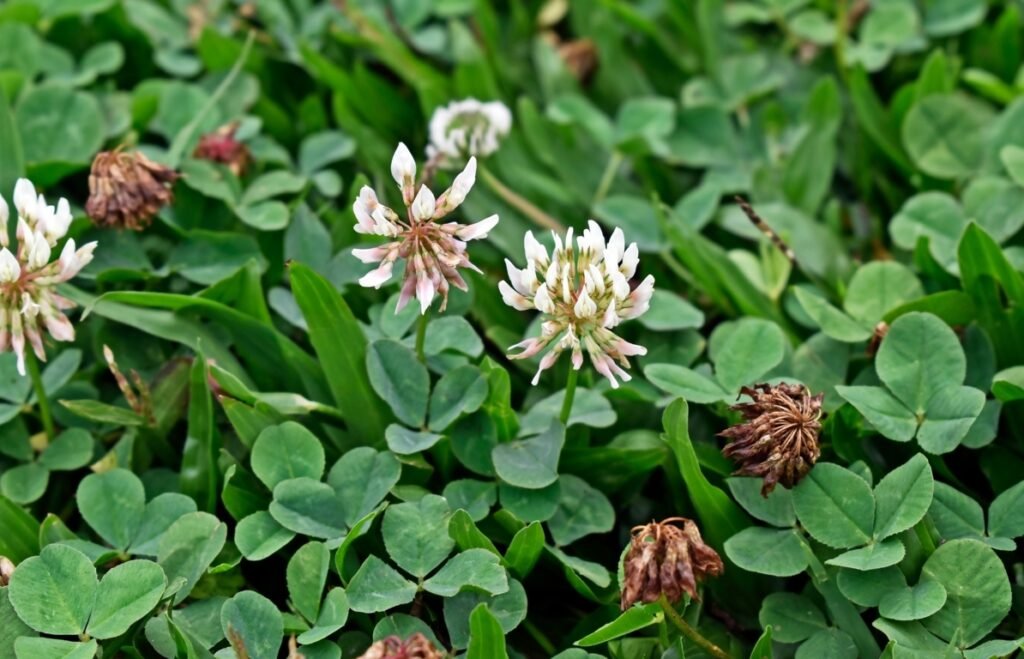
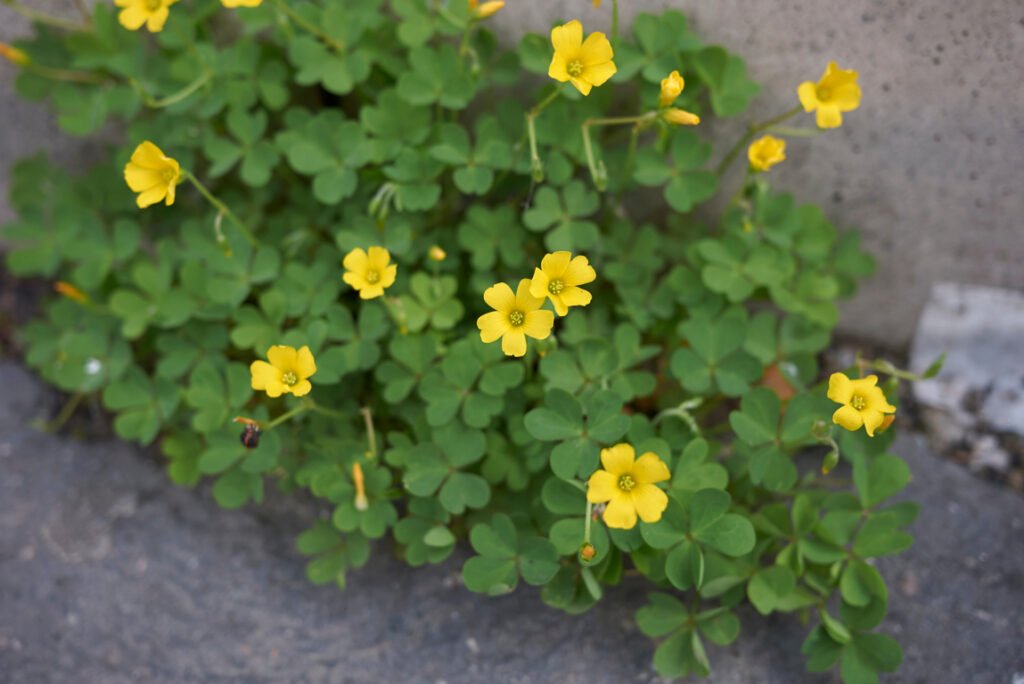
The main difference between clover vs. wood sorrel is that clover leaves rest flat, while sorrel leaves have a visible fold along the center, giving each leaf a butterfly-like look.
This article will dissect clover vs. wood sorrel and help you identify their similarities and differences. From their first appearance to their final benefits, both have their own share of pros and cons. Join me as we explore them all!
What is a Clover?
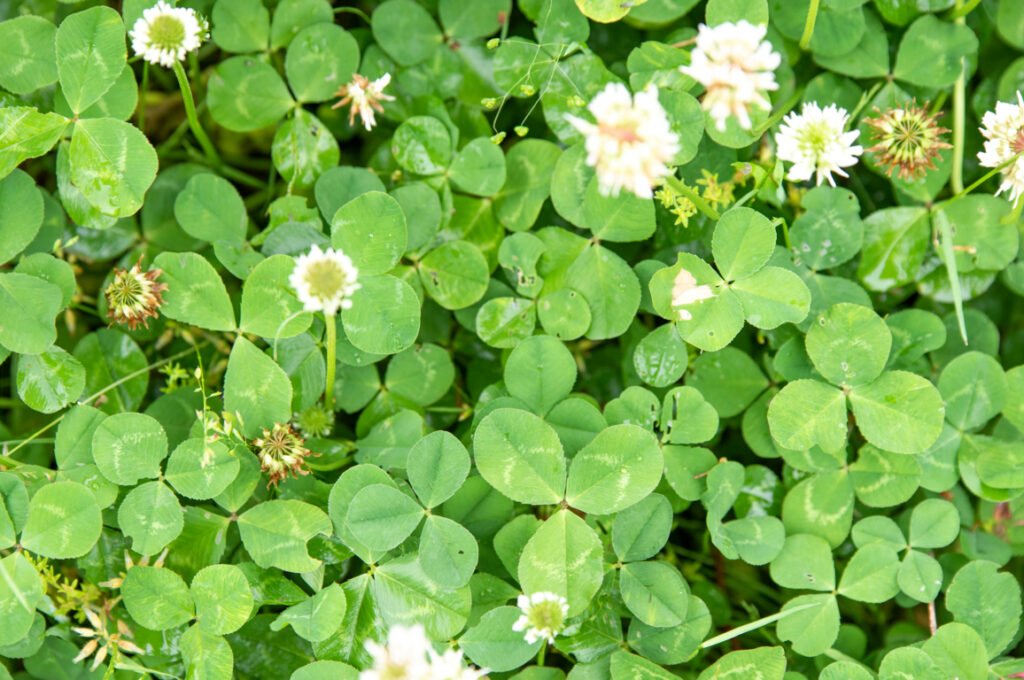
Clover is a common name for the genus Trifolium. It is a legume belonging to the pea family. It has over 300 varieties of flowering plants and thrives best in temperate and subtropical regions. It is famous as a cover crop. However, farmers often harvest it for hay or as feed for livestock.
Both the foliage and flowers of clovers are non-toxic to animals. Deer, bears, rabbits, wild turkeys, squirrels, and many other wild animals feed on them. They also attract honey bees and produce clover honey.
Before World War II, people grew clovers in their yards. These kept their yards green and needed no maintenance. However, due to the invasive nature of clover plants, they were later classified as weeds, and people avoided growing them. These plants escape lawn mower blades due to their stunted growth and require herbicides to get rid of them.
What is a Wood Sorrel?
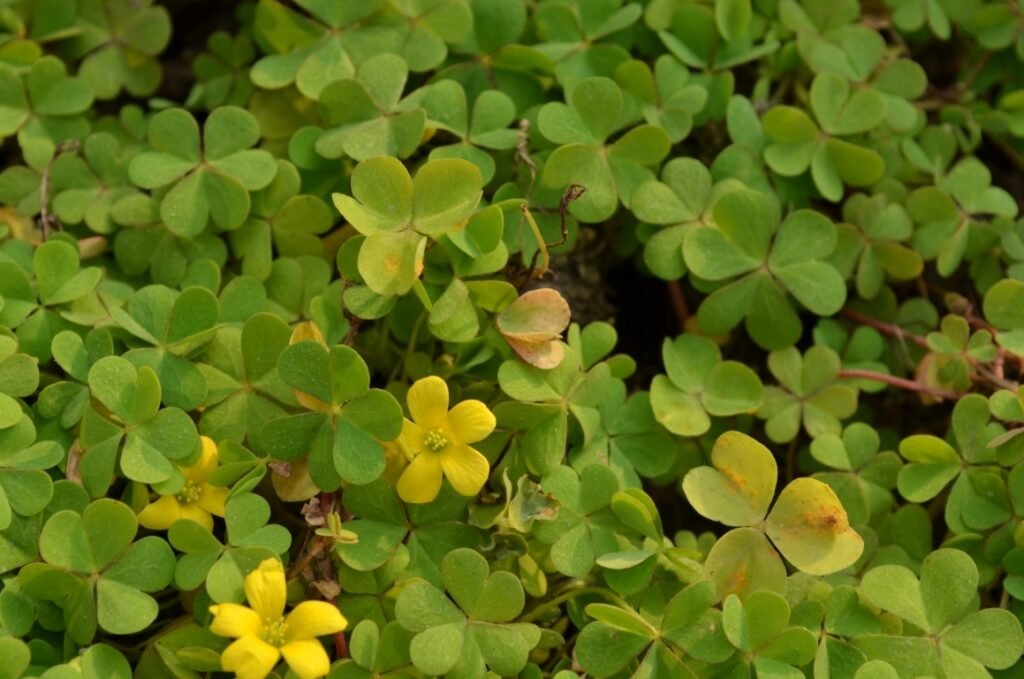
Wood sorrel is a common name for the genus Oxalis. These plants are globally widespread, except in the freezing polar regions. They have compound leaves with forked leaflets.
Wood sorrels are small, low-lying plants that produce white to yellow flowers. They display clover-like leaves in light green shades.
Wood sorrels are edible; however, they taste sour and are mildly toxic. Humans and animals may have to refrain from consuming them in large volumes. It is critical to keep livestock from foraging on them.
Clover vs. Wood Sorrel: Differences
Now that we know both the plants’ attributes, let’s tabulate their features for better clarity.
Here are the similarities and differences between wood sorrel vs. common clover
Wood sorrel and clover plants look alike and share many similarities. Both plants are
- Trifoliate (three-lobed leaflets),
- Invasive or exhibit prolific growth,
- Small and ground-lying spread
Despite so many similarities, there are significant differences between both species.
| Clover | Wood Sorrel | |
| Lifespan | Annual and perennial plants | Perennial plants |
| Height | 8 – 12 inches | 15 – 38 inches |
| Leaves | Trifoliate leaves with oval-shaped, bright green leaflets | Trifoliate leaves with heart-shaped, green, purple, or red leaflets |
| Flowers | Delicate yellow or white flowers with purple veins on them | Clusters of red or white flowers |
| Nitrogen fixation | Nitrogen fixing plants | Non-nitrogen-fixing plants |
| Control methods | Nitrogen-rich manures and commercial herbicides | Opt for post-emergent herbicides with triclopyr as an active ingredient for cool-season turfgrass. Choose fluroxypyr as an active element for warm-season turfgrass. |
Appearance
The visual appearance of clover and wood sorrel is very similar at first glance. However, if you observe deeply, you can find many differences in their shape, color, and structure.
How do you identify clover?
Flowers
Clovers display flower heads with red or white flowers in them. Each flower head is approximately 2–3 centimeters in diameter and grows in a cluster. Several flowers bloom from the center of the flower head. Each flower has five thin petals arranged in a tubular form.
Leaves
The leaflets are oval and broader in the middle. Each leaf divides into three leaflets, which resemble three sets of hearts or butterfly wings connected at one central point. Each leaf often has a light marking that resembles a pale brow. You can find 1–3 leaflets under each flower cluster.
Fun fact: It’s fortunate if you come across clover plants with four leaflets. These four-leaf clovers are rare and hard to find.
How to identify wood sorrels
Flowers
Yellow wood sorrel flowers are buttery yellow and small, measuring around 1.5 cm wide. This radially symmetrical flower has five petals, ten stamens, and a single, erect pistil in the center. Flowers usually bloom between May and October.
Leaves
Wood sorrel leaves are compound, with three heart-shaped leaflets, each with a central crease for folding the leaflets in half. Leaves are usually green; however, they might sometimes be red or brownish-red. Wood sorrel leaves fold up at night and reopen in the morning. It also folds its leaves when stressed, such as when exposed to bright sunlight.
Benefits
Both clover and wood sorrel have great benefits. Despite their invasive nature, you can consider growing them in your yard for their benefits.
Benefits of clover
Clover can be a valuable ally if you are a busy plant parent. These plants can help you keep your yard lush and green with minimal care. Here are a few amazing benefits of growing clover:
- Behaves like a living mulch and controls harmful weed growth
- Reduces soil erosion and retains moisture
- Nitrogen fixing properties
- Attracts bees and helps in pollination
- Edible in small portions
- Medicinal properties fighting against cancer, menopause, and castro-vascular problems
Benefits of wood sorrel
Yellowwood sorrel is rich in vitamin C and provides many health benefits. Despite its toxicity, wood sorrel is edible in small amounts. It is often consumed as a medicinal plant or as an herb.
- It is used topically to cool skin and as a diuretic to aid in stomach problems
- It also treats diseases like scurvy, urinary tract infection, nausea, and sore throat
- It also cleanses the blood and treats cancer.
However, the oxalic acid in these plants can be toxic. Patients who have kidney, gout, or arthritic conditions should avoid them.
Controlling methods
The toxicity and invasiveness of clover and wood sorrel plants can be a nuisance. People prefer to get rid of these weeds to keep their yards neat and visually appealing. Here are some tips to control these weeds in your yard.
Tips to remove clover from your yard
Growing clover is beneficial. However, these benefits come with their own backlogs. Clovers can cause dangerous illnesses in livestock when they forage on them. They also attract bees, so keep clovers out of your yard if you have issues with honey bees.
It is difficult to remove the clovers once they bloom. These plants produce many seeds that can stay dormant for several years. Thus, immediately remove these herbs from your yard before they flower.
Here are some easy ways to get rid of clovers in your yard:
- Dig out the plants individually.
- Adjust mover blades to 3 inches or higher. Clovers grow in turfgrass areas where the grasses are usually 3 inches or less. Thus increasing your blade heights can eliminate clovers.
- Deprive oxygen and water to smother their growth. Place a plastic or cardboard sheet over clover patches by the end of the fall. They will wither ways by the following summer.
- Increase soil nitrogen levels. Clovers grow well in soils with low nitrogen levels. Applying a nitrogen-rich fertilizer to clover plants is an easy way to eliminate them. This will prevent them from spreading and expanding.
- Spot treatment using commercial herbicides.
Tips to remove wood sorrel from your yard
The removal of wood sorrel from yards is a challenging task. They are difficult to manage in temperate climates as they keep blooming. The ripening of seed pods can spread their seeds up to 10 feet from their parent plant. Controlling them is continuous because they can easily reappear if you don’t completely remove them.
Both clover and wood sorrel can be grouped as weeds. Most weed control treatments for clover will also apply to wood sorrel. However, the choice of herbicides might vary depending on their growth sites.
- Use post-emergent herbicides containing fluroxypyr as their active component for treating warm-season turfgrasses.
- Alternate the active ingredient with triclopyr while treating cool-season turfgrasses.
Which plant is growing in your yard? Clover or Wood Sorrel?
To conclude our clover vs. wood sorrel differentiation, I have two simple strategies to distinguish one weed from another.
The easiest method is to observe the flowers. If the blooms display red or white clusters, you’ve got clovers. Instead, if the flowers are singular and vividly yellow, it indicates yellow wood sorrel.
However, in the absence of flowering, check for the shape of the foliage. Clover plants display oval-shaped leaves, while wood sorrels have heart-shaped leaflets.
Frequently Asked Questions (FAQ)
Is sorrel the same as clover?
No, wood sorrel and clover are two different plants. Clovers produce oval leaves with yellow flowers, while wood sorrels have heart-shaped leaves with red or white flower clusters.
What are the different types of clover?
There are several types of clover plants. However, there are three common types, namely, white clover (Trifolium repens), red clover (Trifolium pratense), and strawberry clover (Trifolium fragiferum).
Is clover edible?
Yes, but only in small portions. Wild clover plants are toxic. These can be poisonous to humans and animals when consumed in large volumes. However, they are edible and provide medicinal benefits when consumed in smaller portions.
What other plants look like yellowwood sorrel?
Sometimes wood sorrel is also referred to as a “false shamrock.” Wood sorrels are often mistaken for black medics or shamrocks. Their trifoliate structure confuses their identity. Wood sorrel belongs to the Oxalis genus, while shamrocks belong to the clover family, genus Trifolium.
Is a four-leaf clover the same as a shamrock?
Shamrocks and four-leaf clovers are commonly mistaken and associated with St. Patrick’s Day. A shamrock is a three-leaf clover, whereas a four-leaf clover is considered auspicious due to its scarcity.



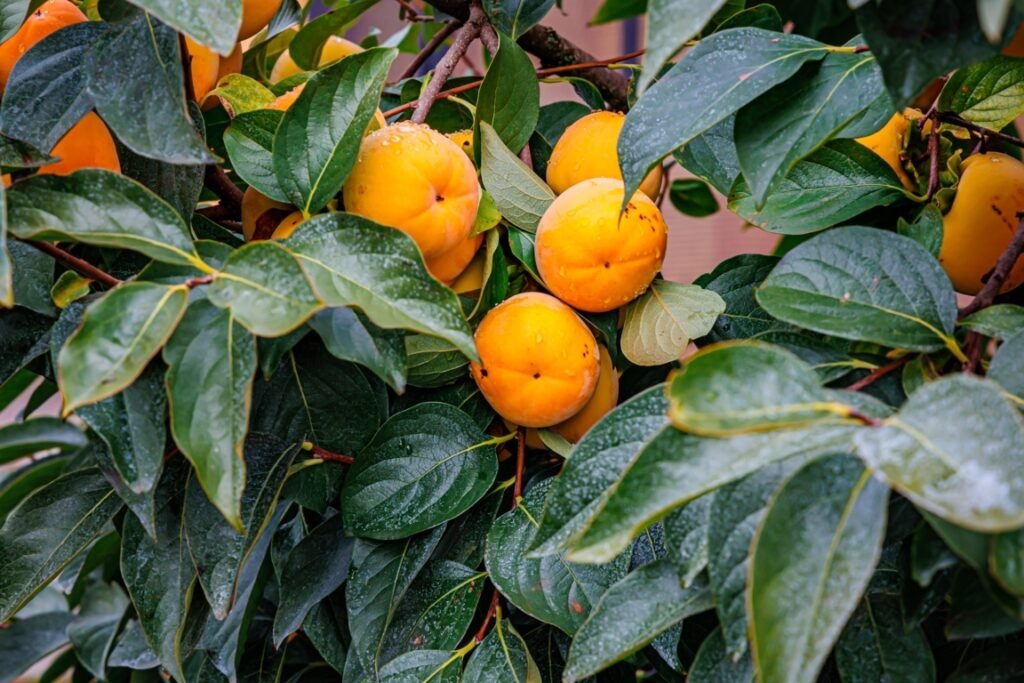
Pingback: Weed with Purple Flowers: Appreciating the Unconventional Beauty – Buyco – Buy Now our High Quality Products and Enjoy 3 Days of Free Shipping
Pingback: Readers’ wildlife photographs – Why Evolution Is True